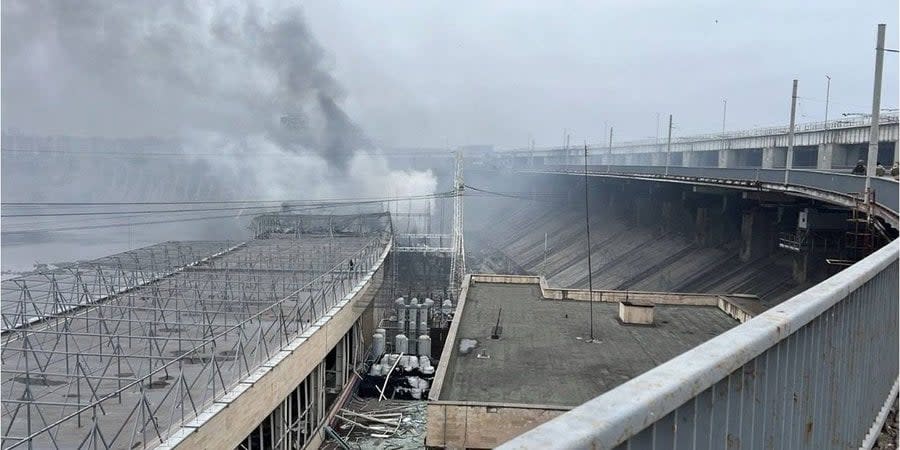Russian strikes may force rolling blackouts across Ukraine, expert says

Dozens of Ukraine's energy facilities, including thermal and hydroelectric power plants, substations, and regional power grids, were damaged in the recent massive Russian missile and drone attacks, causing blackouts in Kharkiv, Odesa, Dnipropetrovsk, and Zaporizhzhya oblasts.
Volodymyr Omelchenko, Director of Energy and Infrastructure Programs at the Razumkov Center think tank, told NV how enemy strikes have affected the national power grid and assessed the risk of blackouts across the country in near future.
NV: On March 22, Russia launched a major attack on energy facilities in Ukraine and continued its terror campaign in the following days. What are the consequences for our energy system?
Omelchenko: We need to look at the consequences for Ukraine as a whole, for all consumers, as well as the consequences for individual regions. As for individual regions, the most negative consequences, the greatest damage was done in Kharkiv, where all the substations were destroyed, and a thermal power plant (TPP) was also destroyed — the city's infrastructure was severely damaged, making it very difficult to repair.
The enemy focused on Kharkiv, Odesa, and Dnipropetrovsk oblasts — especially on Kryvyi Rih. The enemy also concentrated on damaging and destroying power distribution nodes throughout Ukraine. The largest hydroelectric power plant in Ukraine, the Dnipro HPP [in Zaporizhzhia], was hit and its turbine halls were damaged. It’s unclear when it will be possible to restore the plant, but it will definitely take more than a month.
In addition, there were strikes at TPPs, which damaged about 50% of the total thermal generating capacity. So not only certain regions of Ukraine are facing stabilization blackouts, but the entire energy system of Ukraine is on the verge of forced stabilization outages, including in Kyiv, Lviv and other cities, as these strikes have reduced the capacities of the national system. And today it is on the verge of balancing supply and demand.
Therefore, it is possible that this week or next week there will be stabilization blackouts throughout the country, even if there are no further enemy strikes. But it is likely that such attacks could be repeated on a regular basis.
NV: So even if Russia doesn't strike again, blackouts could be introduced throughout Ukraine, as they were in 2022?
Read also: Ukrenergo implements blackouts in Dnipropetrovsk Oblast following Russian attack
Omelchenko: Yes. Maybe not on such a large scale — during certain peak hours, but the risk is there. This does not mean it’s certain — it depends on the possibility of restoration and the severity of the damage. As for Ukrenergo's [Ukraine’s power grid operator] substations and high-voltage transmission lines, the situation there is a little better because there is a certain emergency reserve, a reserve of transformers. As for the reserve of transformer capacity at generation facilities, the situation is worse — there is practically no reserve.
The only thing that can and will help us today is that the temperatures are expected to rise from March 27, with more sunny days. This means, among other things, that solar energy production will increase: this can help our energy system. But the loss of balancing capacity will be quite difficult to make up with renewable energy because we had a serious shortage of balancing capacity before, and now it will become critical.
NV: Recently DTEK [Ukraine’s leading power company] announced that it has lost 50% of its generating capacity. What does this mean and what are the consequences?
Omelchenko: First of all, thermal generation is also a balancing capacity. Secondly, it can lead to difficulties in balancing the system, power shortages at certain hours and a transition to stabilization blackouts across the country.
NV: Serhiy Kovalenko, CEO of Yasno [DTEK’s consumer-facing branch], admitted that there could be a shortage of electricity in the summer. Could we import enough from our neighbors, or will some restrictions become necessary?
VO: In April-May, we will begin repairs and maintenance of our major generation facilities. These are mainly thermal and nuclear power plants. Therefore, there may be some shortage of supply.
Read also:
Of course, we will need imports to help us out. At the moment we can import 1,700 MW of electricity. But we will probably have to talk to ENTSO-E [the European Network of Transmission System Operators for Continental Europe] to increase that to at least 2000 MW. Whether that will be enough remains to be seen. It’s unclear whether the attacks on energy facilities will continue and how damaging they would be.
We’re bringing the voice of Ukraine to the world. Support us with a one-time donation, or become a Patron!
Read the original article on The New Voice of Ukraine

